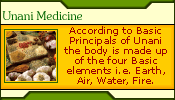| Ritucharya: This word is the combination
of two words i.e. ritu meaning seasons and charya meaning routine,
thus giving the complete term the meaning of the ruotine that is to
be followed in different seasons.
Following is the importance of Ritucharya:
It maintains the climatic homologation in form of dosh samya (equilibrium)
in different seasons to promote swassthvrutha (preventive &
social medicine) on which ayurveda has laid a great stress since
prevention is better than cure.
Hemant (winter season)
This is the season of cold, where the atmosphere temperature drops
down, the environment becomes chilly and this leads to the disequilibrium
of vata dosha and kapha sanchay. In the winter season Vayu is accentuated
and needs to be satisfied by a heavy diet (snigdha, Madhura &
lavanrasa). The diet in hemant must include wheat, gram, milk &
milk products, jaggery, cane sugar, figs, carrots, tomatoes, dates
to prevent the disequilibrium of vata dosha. Til oil massage is
suggested to prevent disequilibrium of vata dosha and excess sanchay
of kapha. Daily exercises or yoga is beneficial. To avoid cold woolen
clothes must be worn and married couple should use aphrodisiacs.
Vasant (spring season)
The sanchit kapha is accentuated in this season by the sun rays
thus the susceptibility of kapha Roga (e.g. cough, cold, tonsillitis
etc) increases and thus reduces the Agni (bio- transformation).
In ayurveda vaman (vomiting) karma is also advocated i.e. one of
the pancha karma's to get rid of excess kapha sanchay and hence
kapha Roga. Sleeping during the day and use of Madhura, Alma, and
lavan is contraindicated as these accentuate the kapha dosha. Instead,
the use of honey and or dry ginger is indicated.
Grishma (summer season)
Heat of the sun reduces the moisture in the atmosphere and thus
increases the ruksh guna of vata dosha, which causes sanchay of
vata dosha. By this way Ahaar and vihar that accentuate its sanchay
can be avoided. Thew examples are that of the use of katu tikta
kashya Rasa, exercises, sexual intercourse, etc. it is advisable
not to take honey and intake of liquids should be increased to prevent
dehydration due to excessive sweating. Use of cotton clothes is
beneficial.
Varsha (rainy season)
In this season the atmosphere is although cool due to rainfall
but the humidity increases and this causes vata dosha prakopa. In
this season ayurveda insists on avoiding Ahaar & vihar, which
attribute to prakopa. Drinking of boiled water (shrut, sheeta jal)
is advisable. Use of rittu hari taki as a rasayan i.e. hari taki
is suggested with different anupanas in different seasons.
Sharadrutu (autumn)
Pitta prakopa is caused due to the heat of sun hence ahar vihar
which attribute to its prakopa should be avoided.
|









